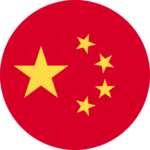
By Oyintarelado Moses and Laura Gormley
Since 2007, Chinese special investment funds targeting overseas development projects have been on the rise. These funds are pools of capital established by multiple public and/or private shareholders that primarily provide equity financing to projects in certain regions and sectors overseas. We call them China’s overseas development investment funds (ODIFs).
What are ODIFs and what does their rise mean for the diversification of China’s overseas economic engagement?
In a new working paper, we track, codify and analyze 21 of China’s ODIFs, which represent a total of $155 billion of paid-in capital. This amount is not equivalent to disbursements, as ODIFs have only extended a portion of this finance for development projects. ODIFs prioritize making profits through equity investments, socioeconomic and development impacts of projects, and opportunities to strengthen economic relationships between China and host countries in investment decisions.
ODIFs can be classified into three types: sovereign development funds (SDFs), private equity funds (PEFs), and joint investment funds (JIFs). SDFs, like the Silk Road Fund, are investment funds wholly owned by state-owned entities that extend equity and debt for equity investments. PEFs are equity funds with a limited partnership structure and a limited fund life to hold and sell assets, for example, see the Green Ecological Silk Road Fund. Third, JIFs, like the UAE-China Joint Investment Fund, are funds established by a Chinese and host country or regional institution for the purpose of extending equity and debt for equity instruments in development-related sectors in the host country or region.
Capitalization of China’s Overseas Development Investment Funds, Breakdown by Type (USD Billions)

Note: JIFs = Joint Investment Funds, SDFs = sovereign development funds, and PEFS = private equity funds.
ODIFs’ shareholders include public and private entities including policy banks, commercial banks, foreign exchange managers, corporations and foreign shareholders. ODIFs support many sectors including energy and resources, general infrastructure, manufacturing, agriculture, technology, the financial sector, green development, the social sector, consumer goods and services, and capacity building. However, investment destinations cover a global scope, funds with a country and regional focus target Global South regions including Latin America and the Caribbean, Central Asia, and Africa.
Given the sizable investment potential of these funds at $155 billion, tracking ODIFs is essential to building a more complete picture of China’s overseas economic activity. These funds are poised to become increasingly common financial tools in China’s Belt and Road Initiative (BRI). ODIFs have been mentioned in several Chinese policy documents such as the 2019 List of Deliverables of the Second Belt and Road Forum for International Cooperation, the 2021 Forum on China-Africa Cooperation (FOCAC) Dakar Action Plan, and the 2022 National Development and Reform Commission (NDRC) Green BRI Guidelines. Mentions of ODIFs as future financing tools in these policy documents convey their significance and signal their potential to become more active investors in the coming years.
As some Global South governments manage debt distress or the risk of debt distress and consider alternative financing sources for domestic development, they will have to weigh the advantages and disadvantages of ODIFs. On the one hand, working with ODIFs through public-private partnerships (PPPs) provides an opportunity for governments to avoid saddling themselves with more debt. On the other hand, in PPPs, governments must share equity ownership of projects with ODIF shareholders. Each government will have to carefully weigh this calculation and consider what types of financing can best facilitate the realization of their country’s development goals.
As China’s overseas activity diversifies and China’s leaders promote the concept of a green BRI, a deeper understanding of ODIFs will be necessary to mitigate social, environmental, and financial risks and maximize the benefits of investment for development.
Oyintarelado Moses is the Data Analyst and Database Manager for the Global China Initiative at the Boston University Global Development Policy Center.
Laura Gormley is a Research Assistant with the Boston University Global Development Policy Center and an MA Candidate in Global Policy at Boston University.









